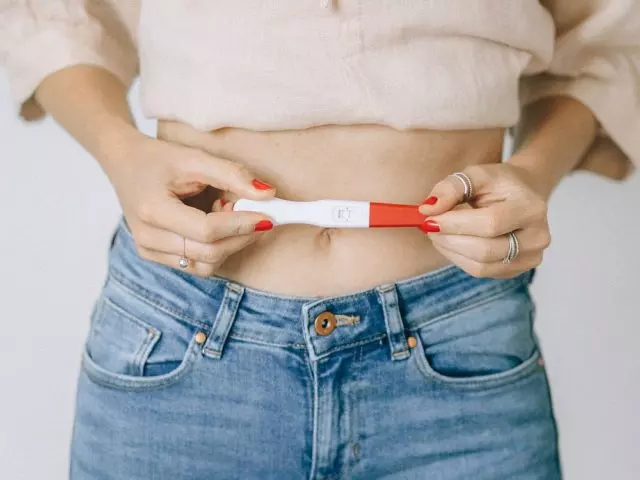Seizures: Always prevent seizures during pregnancy! Can Epilepsy Patient Get Pregnant – drkharkar
This is an article from the Safe Pregnancy in Epilepsy patient guide. Women with Epilepsy can have seizures during pregnancy. Having seizures while pregnant can hurt the baby & mother. It is incorrect to say that pregnancy triggers seizures. But seizures can increase due to 5 important causes of seizures in pregnancy. It is imporant to know these causes of seizures in pregnancy. Taking simple precautions can prevent seizures while pregnant. Table of Contents Can I have seizures during pregnancy? Yes. For example: 1/3rd of women with Epilepsy who get pregnant have breakthrough seizures. This data comes from a research group from Europe. They studied 3500 pregnancies. Can pregnancy trigger seizures? The same European study found two other things: They found that 15% of women had worsening of seizures during pregnancy. Surprisingly, 12% of women have decreased seizures during pregnancy. So, it is too simplistic to say that pregnancy can trigger seizures in patients with Epilepsy. If that were the case, none of the women would have decreased seizures during pregnancy. Why do some women have decreased seizures while pregnant? Epilepsy is not a static condition. It’s intensity waxes and wanes, like the waves in the ocean. You may have noticed this if you have uncontrolled epilepsy. On some months, you get more seizures but cannot pinpoint why. On other months, you stop getting seizures and you don’t know why. Some researchers strongly believe that this is the cause. That increased seizures during pregnancy are just caused by the waxing & waning nature of Epilepsy. But this is not the complete story. Based on research, and in my experience – there are 5 important causes of seizures in pregnancy. To prevent seizures during pregnancy, you need to pay heed to these… 5 causes of seizures in pregnancy: Of these 5 causes of seizures in pregnancy, 4 are more common in Epilepsy patients. The last is equally common in women with epilepsy, and those without epilepsy. (1) Uncontrolled Epilepsy before getting pregnant This one is obvious. Of all the causes of seizures in pregnancy, this is the best predictor of seizures. In some people, Epilepsy is difficult to control. If you were having breakthrough seizures even before getting pregnant, you could have seizures while pregnant. For example: A study in Australia studied almost 1000 pregnancies. Women who were seizure free for at least one year were 4 times less likely to have seizures during pregnancy. Here are the exact chances per that study: If you are seizure-free for 1 year, less than 20% chance of having seizures during pregnancy. If you are not seizure-free, 75% chance that you will have seizures during pregnancy. Another study done in the US (the MONEAD study), had similar findings. So, to prevent seizures during pregnancy – make sure you are seizure-free for at least 1 year before getting pregnant. (2) Stopping seizure medications Some women stop seizure medications when they realize they are pregnant. They are trying to prevent harm to the baby (Teratogenicity). This is a bad choice. This is a easily preventable cause of seizures in pregnancy. Having seizures while pregnant can be dangerous for you and your baby. Please don’t stop seizure medications by yourself, ever. You can and should talk to your doctor about all options. He/she will most likely advise you not to stop medications. In most cases, it is just too risky. Taking your medications regularly is critical to prevent seizures during pregnancy. (3) Changing seizure medications after becoming pregnant Some seizure medications are more likely to harm the baby. Other seizure medications are safer for the baby. You can consider switching the safer medications before pregnancy. What about after you get pregnant? Would taking the safer medications instead be better? This seems more reasonable than stopping seizure medications entirely. Perhaps it is. But: Usually, this too is not a good choice. This, too, is an easily preventable cause of seizures in prengnacy. The 1998 American Academy of Neurology guidelines advise against this. They also superbly explain why: You could have uncontrolled seizures. If you change medications, the baby is exposed to two different medications. This ,may be more dangerous than any one medication. Patients go to a neurologist several weeks after becoming pregnant. By that time, there is limited advantage to change. (4) Decreased levels of seizure medications during pregnancy Many of the causes of seizures in pregnancy discussed so far are obvious. But many patients and caregivers are not aware of decreased levels of seizure medications. During pregnancy, the liver and kidney go into over-drive. The liver inactivates medications more quickly. The kidneys throw medications out of the body more quickly than usual. Also during pregnancy, the volume of your blood increases. The medications you are taking get diluted. Thus, the concentration of seizure medications decreases. There are other ways in which the levels of seizure medications can decrease. These include frequent vomiting, decreased absorption, decreased binding to proteins in the blood etc… Ultimately, your brain gets less seizure medication. This can lead to breakthrough seizures. To prevent seizures during pregnancy, it is critical to ensure adequate blood levels. This may mean that you need to increase the dose of epilepsy medications. Which seizure medications are affected? Almost all seizure medication levels decrease in pregnancy. But some seizure medications are more severely affected. The table below shows data from a recent paper (Arfman 2020). Marked drop in levels Lamotrigine (50%) Levetiracetam (50%) Oxcarbazepine Phenyotin* Valproate* Topiramate* Marked drop in levels Carbamazepine Unknown Lacosamide Clobazam Gabapentin Perampanel *Phenytoin, Valproate & Topiramate should be avoided in pregnancy anyway, due to the risk of teratogenicity. Prevent seizures during pregnancy due to reduced levels: First of course, you should aim for good seizure control before becoming pregnant. Then, before getting pregnant, your doctor will check a blood level. This is the “baseline blood level”. This is the level at which your brain is happy, at which it stops having seizures. Some people suggest doing this twice before pregnancy to get the best possible estimate. During pregnancy, your doctor may regularly check


